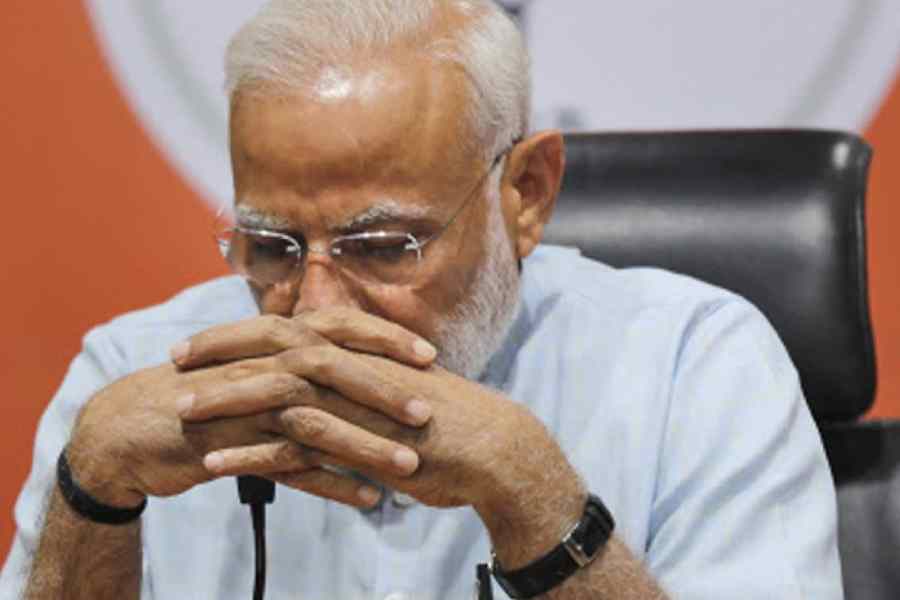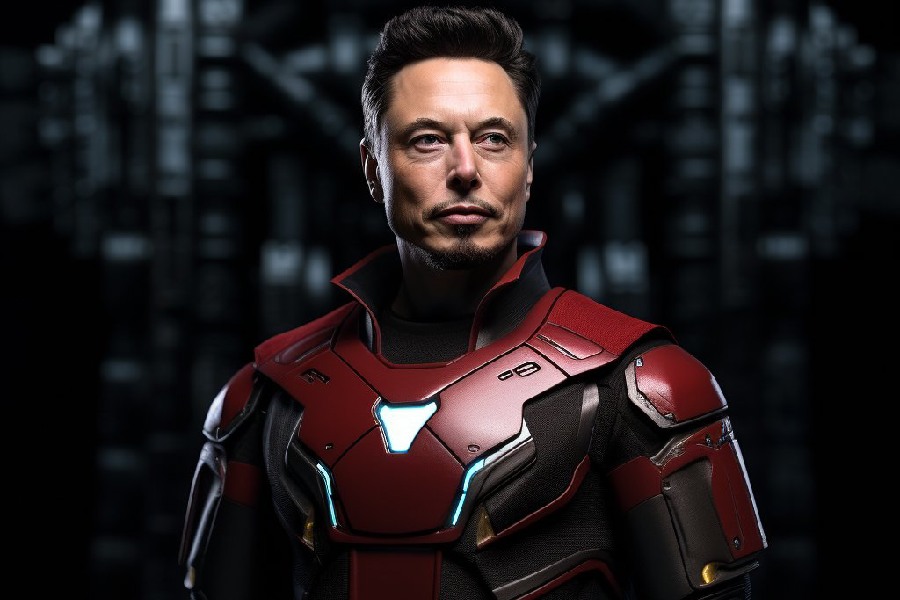The eyes of the Happy Prince were filled with tears, and tears were running down his golden cheeks. His face was so beautiful in the moonlight that the little Swallow was filled with pity.
“Who are you?” he said.
“I am the Happy Prince.”
“Why are you weeping then?” asked the Swallow; “you have quite drenched me.”
“... My courtiers called me the Happy Prince... And now that I am dead they have set me up here so high that I can see all the ugliness and all the misery of my city, and though my heart is made of lead yet I cannot choose but weep.”
... And he (the Swallow) kissed the Happy Prince on the lips, and fell down dead at his feet.
At that moment a curious crack sounded inside the statue, as if something had broken. The fact is that the leaden heart had snapped right in two.
From “The Happy Prince”, Oscar Wilde
Generation after generation has grown up reading “The Happy Prince”. Prime Minister Narendra Modi, having written and updated a stress-buster book for pupils, must surely be familiar with the story.
When news of the collapse of Chhatrapati Shivaji’s statue broke, I wondered whether the heart of the monument to the Great Maratha of the 17th century and that of the modern-day Hindu Hriday Samrat had snapped. We are unlikely to gain an authoritative insight into the heart of the statue, other than the disclosure made by the Union minister, Nitin Gadkari, that had stainless steel been used instead of some powder with which the iron roads were coated, the monument would still be standing.
But a clue to what went on inside the other sturdy heart was provided by the emperor of hearts himself. “For me, my colleagues and everyone, Shivaji Maharaj is not just a king but a revered figure... Today, I bow my head at his feet and apologise to my deity,” Prime Minister Modi said on August 30, referring to the collapse of the statue.
This was a remarkable moment in the history of the republic — and quite different from the discovery of the foundry overseer in “The Happy Prince” who exclaims: “What a strange thing! This broken lead heart will not melt in the furnace.”
Modi has occasionally offered evidence that his heart is not made of lead, taking after his margdarshak, L.K. Advani, and unable to fight back tears at the mention of his mother and Rohith Vemula, the PhD scholar whose suicide ignited the first wave of protests against the Modi regime.
But rarely has he betrayed any sign of his heart melting. In 2013, while Modi was giving the finishing touches to his national ambitions, the Reuters news agency had asked him whether he regretted the violence that marked the Gujarat riots of 2002 when he was chief minister. Reuters reported that Modi compared his feelings to the occupant of a car involved in an accident. If “someone else is driving a car and we’re sitting behind, even then if a puppy comes under the wheel, will it be painful or not? Of course, it is. If I’m a chief minister or not, I’m a human being. If something bad happens anywhere, it is natural to be sad,” Modi was quoted as saying.
Since then, the hearts of Modi and many other fellow citizens have fortified themselves with the steel that has apparently been denied to the statue of Shivaji Maharaj. Human Rights Watch, the New York-based non-government organisation that carries out research and advocacy on human rights, analysed all 173 campaign speeches by the prime minister during the 2024 general election and concluded that “in at least 110 speeches, Modi made Islamophobic remarks...” Since the election, although Modi has been weakened, the violence against religious minorities has continued. Till August 14 this year, at least 28 such attacks had been reported in the country, “resulting in the death of 12 Muslim men and a Christian woman”, said Human Rights Watch.
In the Human Rights Watch statement on August 14, its Asia director, Elaine Pearson, struck a note of caution: “These inflammatory speeches [those of Modi and other BJP leaders], amid a decade of attacks and discrimination against minorities under the Modi administration, have further normalized abuses against Muslims, Christians, and others.”
Modi has rejected allegations of bias against Muslims, insisting that “the day I start talking about Hindu-Muslim, I will be unfit for public life. I will not do Hindu-Muslim. That is my resolve.”
How prescient Pearson was became clear in a fortnight. On August 28, Sabir Malik, a 22-year-old labourer from Bengal, was beaten to death in Haryana on suspicion that migrant workers were consuming beef. On the same day, a video clip emerged that showed a 72-year-old man being assaulted on a train in Maharashtra after he was accused of carrying beef.
The ‘normalisation’, warned of by Pearson, was chilling. The news was treated as a routine occurrence by most news organisations. Soon, word emerged that a Class XII student, Aryan Mishra, was chased and shot dead by mistake by cow vigilantes on August 23; again in Haryana, which went to the assembly elections earlier this month.
Probably because Modi was busy elsewhere, some news sites refloated a 2016 video clip in which the prime minister expressed his anger against cow vigilantes. When Mohammad Akhlaq was beaten to death on the erroneous suspicion of storing beef at his house in 2015, Modi took more than a week to make an indirect reference to the lynching and advocate harmony. It took another six days for Modi to make a direct reference and describe the lynching as “sad”.
On the deadly violence in Manipur, Modi needed over 75 days to break his silence. When the statue of Shivaji collapsed, Modi took only four days to apologise. Such anecdotal evidence suggests that it is difficult to calculate the melting point of such a mighty heart.
A CPI(M) delegation met the grieving family of Aryan Mishra. Rahul Gandhi, the leader of the Opposition in the Lok Sabha, has condemned the attacks. “Attacks on minorities, especially Muslims, are continuing and the government is watching as a mute spectator. The authority of law must be established by taking the strictest action against such anarchic elements,” he said, referring to two of the attacks. But an Uttar Pradesh-based rights defender said the Opposition needed to do more to protect and reassure the minorities.
Weeks into Sabir’s murder, I had not read about any ‘spontaneous outrage’ or ‘candle-light vigil’ seeking justice for Sabir. I asked a senior editor why the lynching was played down. “As someone said, not PLU enough,” he replied, referring to ‘people like us’ — an unofficial yardstick that some newsrooms, especially those of the English media, use to decide which story to play up and play down in line with the perceived interest of their target audience.
Anil Kaushik, one of the accused in the Aryan murder case, touched the feet of Aryan’s father, Siyanand, and “regretted killing a Brahmin”. Uma Mishra, mother of Aryan, asked the inescapable question that has been confronting India: “They shot my son thinking he was a Muslim. Aren’t Muslims humans? Aren’t they our brothers? Why would you kill a Muslim? Muslims protect us.”
In Oscar Wilde’s “The Happy Prince”, the Prince makes the Swallow his source of news: “There is no Mystery so great as Misery. Fly over my city, little Swallow, and tell me what you see there.”
The Swallow does so, eventually falling prey to the biting cold, uttering these last words to the Prince: “Death is the brother of Sleep, is he not?”
This is a question vast sections of the Indian media may need to ask themselves one day.
R. Rajagopal is editor-at-large, The Telegraph











